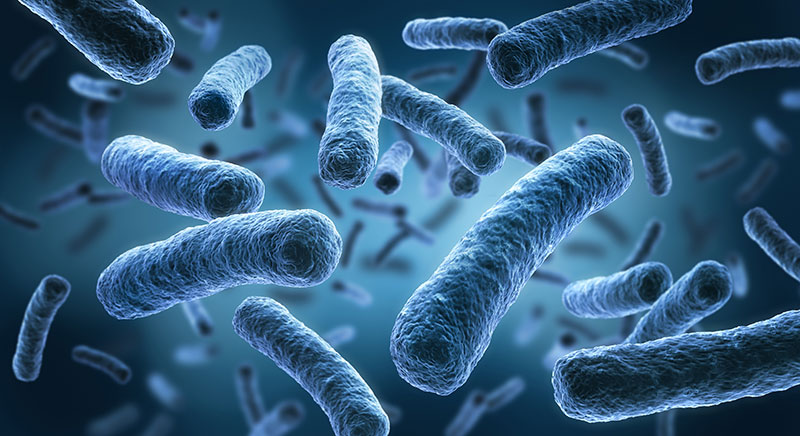News from QED Bioscience
Superbugs and Antibiotic Alternatives: New and Accidental Discoveries
See the latest developments in next generation therapeutics for conquering antibiotic resistance.
1. Lucky Accident
Investigators at Johns Hopkins University School of Medicine accidentally discovered that inhibiting host caspases was an effective defense against methicillin-resistant Staph. aureus (MRSA) and other bacterial infections. Caspases mediate programmed cell death of aged or damaged cells. While studying IL-1β and its importance in bacterial infections, mice with and without the capability of synthesizing IL-1β were used (inactive IL-1β is activated by caspases). Mice were administered a compound, Q-VD-OPH, that blocks all caspases on the assumption that doing so would make both sets of mice equally vulnerable to a MRSA infection – but the opposite happened! The treatment worked against MRSA whether IL-1β was present or not, and it worked as well against Streptococcus pyogenes and Pseudomonas aeruginosa. Further studies suggested that Q-VD-OPH reduced apoptosis of cells needed to fight off infections, such as neutrophils and monocytes, leaving them in plentiful numbers and better able to assist in host-directed immunotherapy. To quote the senior author on their publication, “It’s like a fire department where older firetrucks are kept operating to help put out blazes when otherwise they would have been taken out of service.”
Reference: Alphonse, M et al. 2021 Pan-caspase inhibition as a potential host-directed immunotherapy against MRSA and other bacterial skin infections. Science Translational Medicine, Volume 13, Issue 601.
Explore our selection of monoclonal and polyclonal antibodies to Caspases
| Image | Name | SKU | Details | Price | Buy |
|---|
Also view our Infectious Disease antibodies
2. Targeting Bacterial Defenses
How can we weaken the defenses that protect bacteria from lethal doses of antibiotics? Researchers at New York University School of Medicine set out to answer that question by screening existing drug libraries and landed on candidates that inhibited a bacterial enzyme called cystathionine gamma-lyase (CSE). CSE is essential to H2S production. Why is that significant? When exposed to antibiotics, some bacteria switch to a dormant state in order to survive in a process that’s mediated by the production of H2S. In lab tests, CSE inhibitors significantly reduced H2S production by Staphylococcus aureus and Pseudomonas aeruginosa and enhanced the effectiveness of different antibiotics. In a mouse model of S. aureus sepsis, combining a CSE-inhibitor with gentamycin enhanced mouse survival, and in mice with lung infections caused by P. aeruginosa, that combination markedly reduced bacterial burden. CSE inhibitors also interfered with the formation of biofilms. Of course, the search for new and effective antibiotics will continue, but suppressing bacterial H2S by inhibiting CSE could be a means of increasing the effectiveness of existing antibiotics.
Reference: Shatalin, K. et al. 2021 Inhibitors of bacterial H2S biogenesis targeting antibiotic resistance and tolerance. Science 372: 1169.
| Image | Name | SKU | Details | Price | Buy |
|---|
3. Novel Anti-Infective: Castaneroxy A
MRSA is one of the most serious infectious disease concerns worldwide due to its characteristic resistance to commonly used antibiotics. In their search for antibiotic alternatives that could inhibit MRSA, a team at Emory University examined a bioactive fraction of Castanea sativa (European chestunut) leaves that exhibited a high level of activity against MRSA in vitro and in a mouse model of skin infections. Further fractionation of the extract led to isolation of a cycloartane-type triterpenoid, Castaneroxy A, which inhibits the S. aureus agr system (the Accessory Gene Regulator (agr) quorum sensing system). It was described as an “anti-virulence compound”, not a growth inhibitory compound like many antibiotics which often fail over time due to emergence of resistant strains. Native Americans of North America have historically utilized the leaves of various Castanea species in traditional medicine for many illnesses, and Castanea sativa leaves have also been used in Italian traditional medicine as a boiled leaf compress to treat pustulant wounds, rashes, and burns. This study reinforces the benefits of exploring natural chemistries for weapons against antibiotic-resistant pathogens.
Reference: Salam, AM et al. 2021 Castaneroxy A from the leaves of Castanea sativa inhibits virulence of Staphylococcus aureus. Frontiers in Pharmacology 12: 640179.
| Image | Name | SKU | Details | Price | Buy |
|---|


